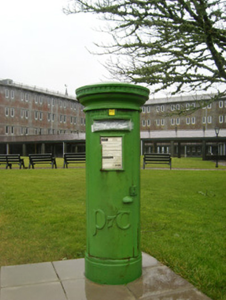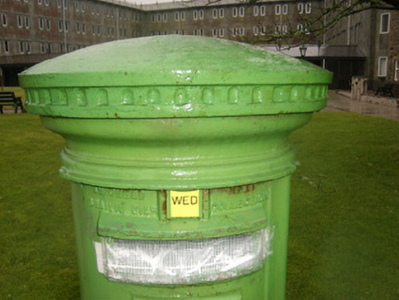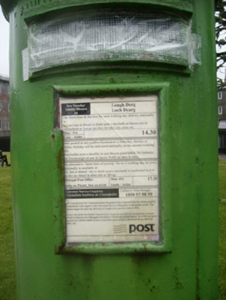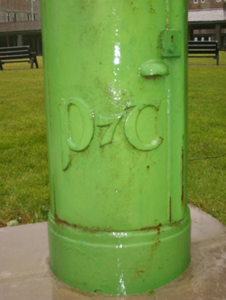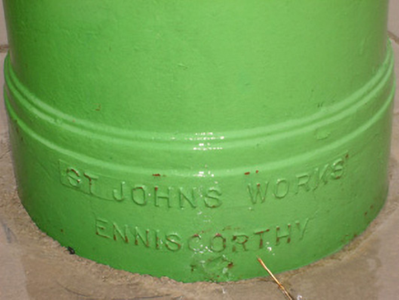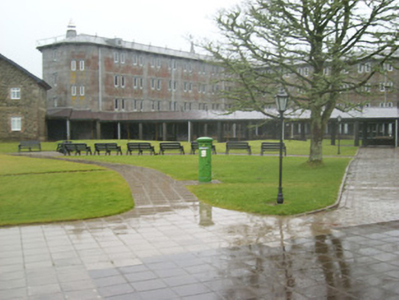Survey Data
Reg No
40910107
Rating
Regional
Categories of Special Interest
Social, Technical
Original Use
Post box
In Use As
Post box
Date
1930 - 1950
Coordinates
208398, 373411
Date Recorded
22/01/2008
Date Updated
--/--/--
Description
Freestanding cast-iron pillar post box on circular-plan, erected c. 1940, having shallow domed cap with fluted/dentilated rim and moulded necking, moulded projecting plinth, protruding letter flap, information plaque on rectangular-plan, full-length-door with raised P&T monogram to base, and with relief mouldings over door reading ‘An Chead Bailiú Eile’ – ‘Next Collection’. Foundry mark to rear on plinth reading ‘St Johns Works, Enniscorthy’. Located within open space area to south of St. Mary’s Church (see 40910102) and to the north-east of the New Women’s Hospice (see 40910104) to the south-east end of Station Island, Lough Derg. Recently sealed and disused.
Appraisal
Although no longer in use, this post box is an attractive item of street furniture that represents an early surviving artefact of mass-produced cast-iron ware. Its survival is testament to the quality of its original design and of the materials used in its manufacturing. The appearance of this functional but distinctive object is enlivened in its detailing such as moulded shallow cap with fluted rim. This is one of the very few pillar-type cast-iron post boxes surviving in Donegal, and it was originally erected to cater for the mail generated by the thousands of pilgrims that visit and stay on Station Island, Lough Derg. The raised Gaelic/Celtic Revival style script is of particular interest as a reminder of the promotion of a national identity following the establishment of the Independent State. The P&T monogram indicates the Department of Post and Telegraphs. This particular design probably dates to after c. 1937 as earlier post-independence post boxes usually had a 'SE' cipher. This post box was cast at the Saint John's Works (c.1890-1964) of Enniscorthy, County Wexford. This simple piece of street furniture makes a positive contribution to Station Island, and is an integral element of the built heritage of the local area.

